Atalanta had a busy summer underlined by a few significant transfers in and out of the club.
The manager Gian Piero Gasperini has the difficult task of completely rearranging the team and adjusting to the personnel change for the upcoming 2023/24 season.
The 20-year-old Rasmus Højlund, who scored nine goals last season, joined Manchester United, while their first-choice left wing-back Joakim Mæhle left for Wolfsburg.
Players like Jérémie Boga, Sam Lammers, Ruslan Malinovskyi, Matteo Pessina and Marco Spotiello also left on permanent deals.
While all departures brought significant finances to the club, they affected Atalanta’s squad depth significantly and left Gasperini with gaps in certain positions that needed to be filled.
La Dea quickly handled the situation in attack by signing Gianluca Scamacca and Charles De Ketelaere, who didn’t see much success at West Ham and Milan, respectively.
Despite failing to demonstrate their strengths in their previous clubs, Gasperini saw their potential and made them part of his new project.
Almería’s El Bilal Touré, who scored seven goals in 21 La Liga games last season, will also add some edge in front of the goal.
Atalanta’s attacking struggles over the past couple of seasons really made it difficult for them to stay competitive enough and fight for the European spots.
The astonishing attack that made Atalanta the most efficient attacking team in Serie A for three consecutive seasons is long gone, and the manager desperately needs to find a new solution in the final third.
That’s not the only issue, though, as the change of personnel and the injury blows in midfield and defence requires rearrangements.
Atalanta’s average age has significantly dropped over five years, from 31 in 2018/19 to 27 in 2022/23 and continues to decline.
That is part of Gasperini’s new project to completely transform the team after the departure of their most valuable players, which inevitably required a change of their strategy.
In our tactical analysis, we will include scout reports on the new arrivals and explain Atalanta’s tactics in the new Serie A season.
Defensive Third
The defence is the only area lacking significant changes and is expected to be key for the team to build on in the new campaign.
Merih Demiral became the next player to join the Saudi Al-Ahli.
His departure might require a January action towards signing a new centre-back, with Hellas Verona’s Isak Hien already being linked with the club.
Demiral’s absence won’t drastically affect Atalanta’s style of play, as he didn’t get many playing minutes last term.
However, having an experienced player on the bench has benefited La Dea, and they need to find a quality replacement.
The key figures remain at the club and are expected to lay the foundation for the rest of the team.
Atalanta’s style of play has changed quite a lot in the last few years, and while they still rely on a three-man defensive line, their role has transformed.
The team still build up from the back, but instead of depending on a high short pass frequency and creative movement, they have focused better on exposing through the flanks and often sending long balls to the opposition half.
While previously, the goalkeeper would interact with the defence through short passing more frequently, now Russo often looks for long balls directly to the advanced areas.
They usually drop a midfielder in the defensive line to support building up from the back, as in the example below where Marten de Roon has moved.
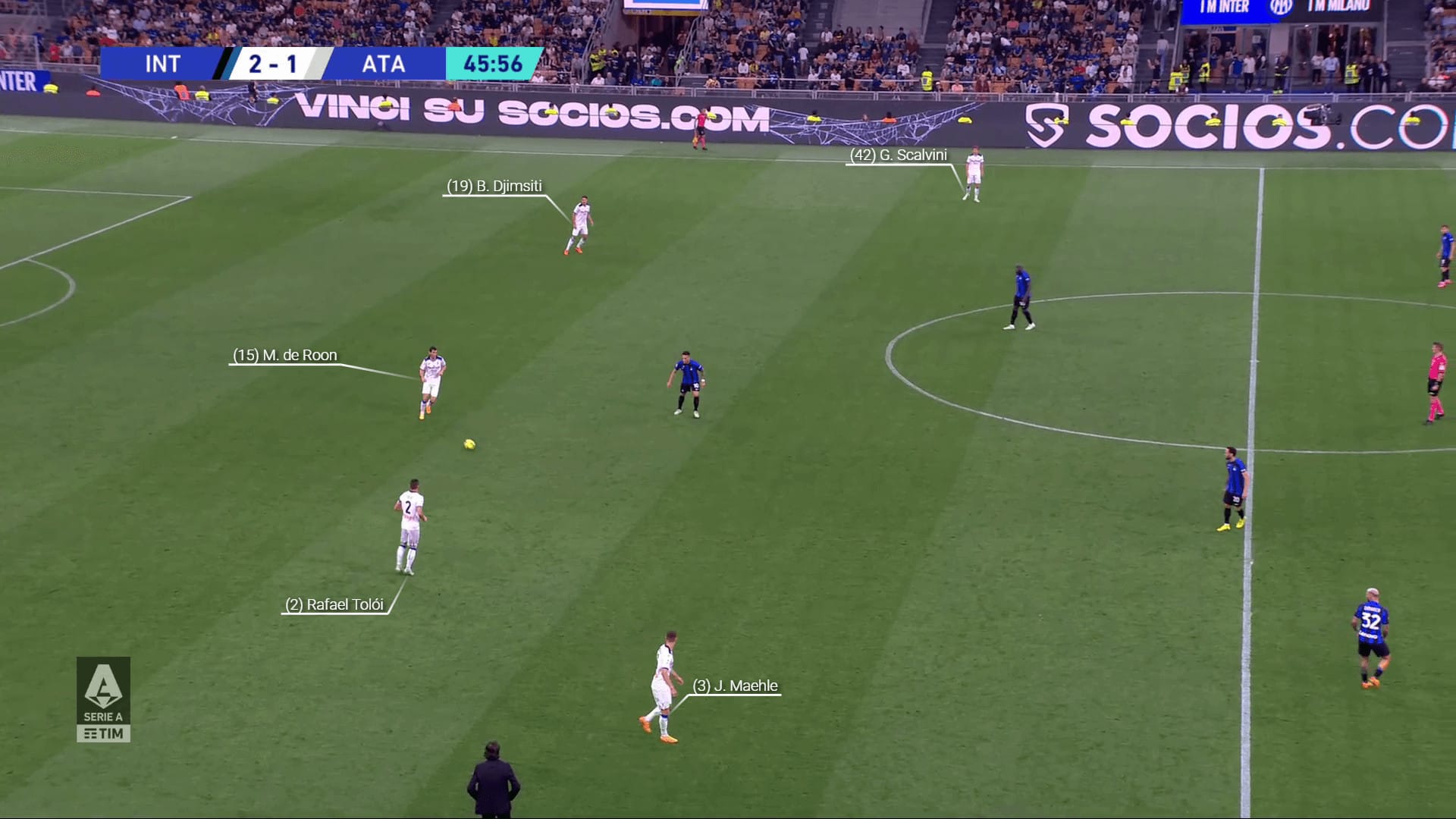
The team’s wing-backs have always had a more attacking function than a defensive one.
However, the change of personnel and the latest injuries has underlined their importance for defensive actions more than ever.
Despite always being focused on progressive play, the team had achieved a seamless transition through their pressing strategy and proactive defensive actions.
Yet, despite being successful for the most part, they do occasionally struggle to defend counterattacks and block long balls behind the defence.
That results from their highly positioned backline, which initiates attacking movement but can often get caught off guard, especially against pacey and skillful attackers.
Combined with their tendency to invite pressure so they can free up spaces further down the pitch, it often causes them trouble.
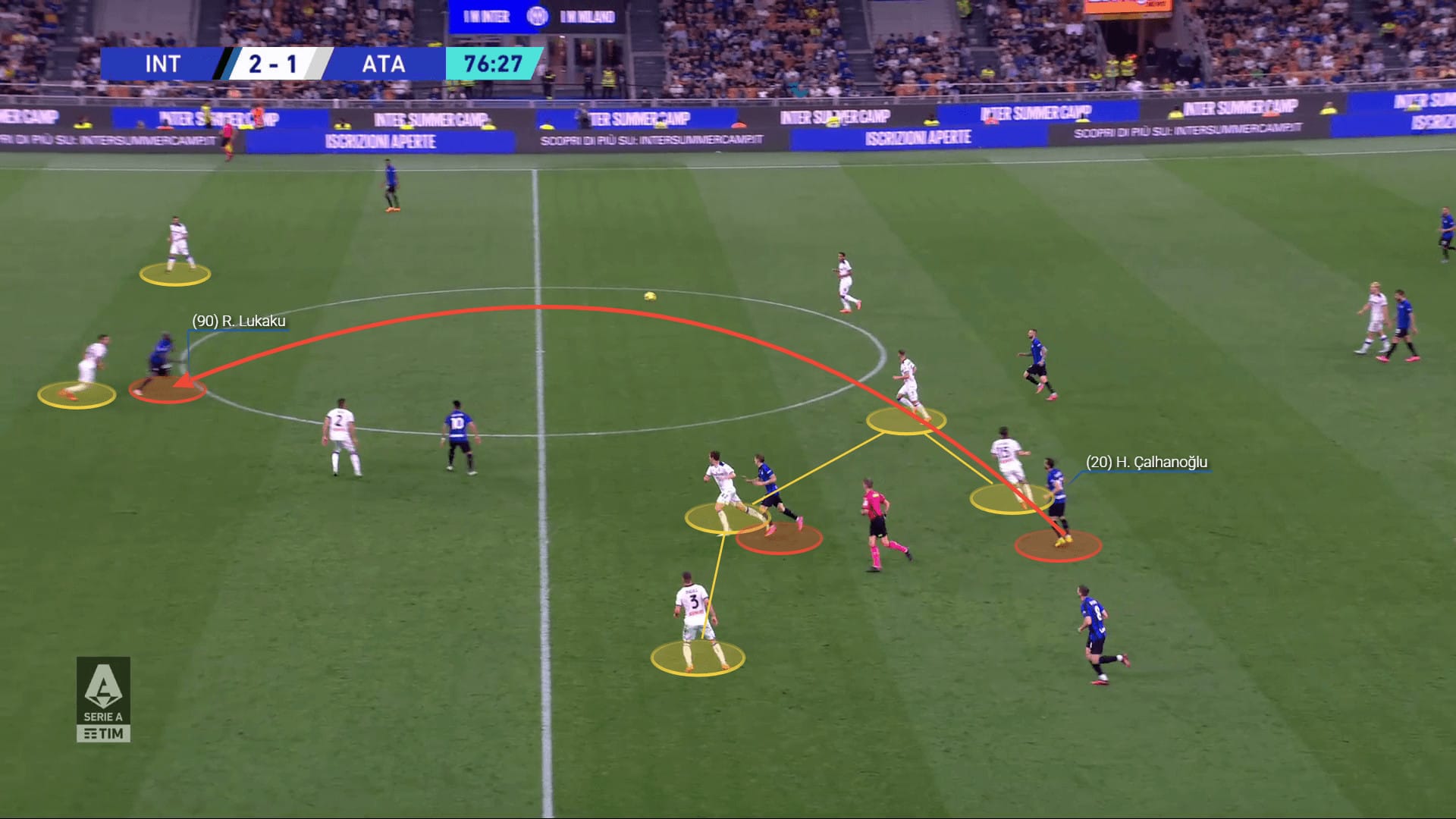
As shown in the example, too many players got involved in pressing the ball carrier Hakan Çalhanoğlu, who targeted Romelu Lukaku with a long ball.
There were still enough players to mark him, but instead of attacking, he dragged them down with his movement and opened space for his teammates to advance and receive the ball from him behind the defence.
They also struggled to defend shots from distance last year.
While it’s easy to blame it on the goalkeeper, the reason for the 11 conceded goals from outside the box was mostly the overcrowded box and the limited visibility of the ‘keeper.
La Dea often have more than five people defending in the box and pressing the ball carrier, which has its pros and cons.
And conceding goals from distance is one of its downsides.
However, their willingness to regain possession and their man-to-man pressing resulted in many defensive challenges.
They were involved in the most defensive duels in Serie A last term, with the highest success rate in their direct challenges of 63.7%.
Their aggressive approach helps them have a higher possession percentile and control the games.
They are also the most efficient team in terms of aerial presence.
Their 52.9% success rate last season helped them gain an advantage in key areas and keep the opposition from the goal.
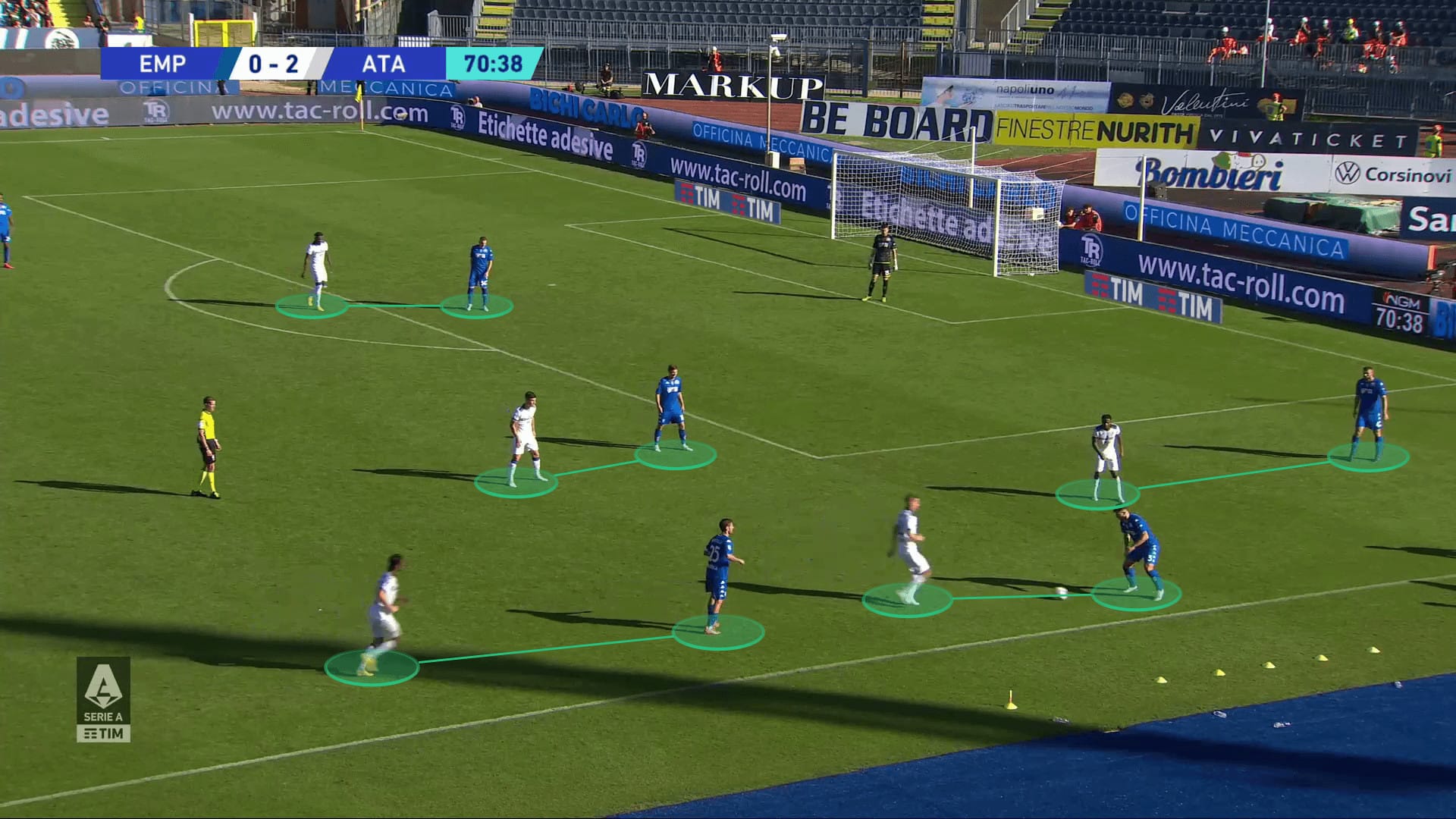
The intensity of their game results in frequently losing the ball; that’s why their ability to dive into challenges are crucial for their defensive record.
Gasperini’s three goalkeeping options are Juan Musso, Marco Carnesecchi and Francesco Rossi.
Musso spent nearly two months out due to injuries last season and will be the first-choice keeper as his replacement Marco Sportiello completed a permanent move to Milan.
Musso has adapted to Gasperini’s strategy and frequently comes off his line, supporting the build-up from the back and constantly combining with the backline.
The centre-back options start with the 19-year-old Giorgio Scalvini, who, despite his young age, earned his spot through his movement and composure.
They allow him to defend intelligently, play out short passes, and successfully retain possession under pressure.
Something crucial for Atalanta’s ball progression.
Below is the map showing his defensive territory, hence the areas where he most intensely dives into defensive duels and intercepts the ball.
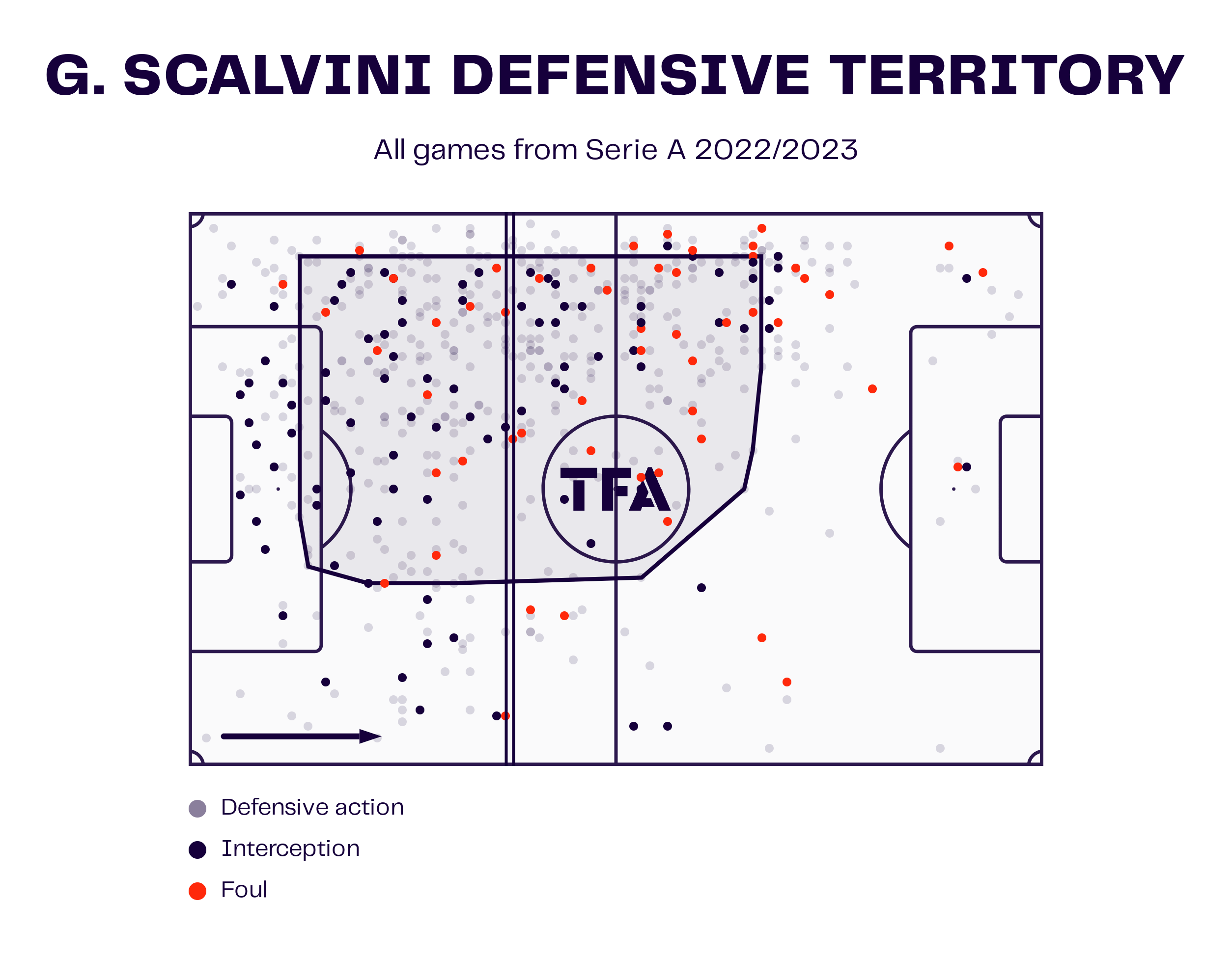
Rafael Tolói’s experience and the intensity of his defensive actions make him the team’s new leader.
He will be crucial for leading the backline into defending as a unit, stepping up whenever gaps occur, and keeping the balance in La Dea’s defensive third.
Despite his defensive responsibilities, he is the one to support the build-up with long balls and move into an advanced position to send passes to the final third.
Berat Djimsiti is the third first-choice centre-back who completes the well-balanced defensive line as he contributes quite actively with his impressively accurate passing.
The backup options for Gasperini are José Luis Palomino, who is injured at the time of writing, Giovanni Bonfanti and Caleb Okoli.
The Wing-Backs’ Influence
The wing-backs have always been crucial in Gasperini’s 3-4-1-2 set-up, equally important in attack and defence.
The role, though, has changed slightly with Robin Gosens’ departure and Hans Hateboer’s frequent injuries as the manager had to adjust the approach to the available players, which initiated a sequence of changes.
Joakim Mæhle fit perfectly on the left, making the transition easier with his frequent attacking movement and strong passing.
However, the team often struggled to cover depth for him as his advanced movement would leave gaps behind.
The Dane’s move to Wolfsburg left the LWB position open, and Atalanta had to find a solution.
Their response was signing the ex-Arsenal player Sead Kolašinac and Bayer Leverkusen’s Mitchel Bakker.
It is expected that Bakker will be Gasperini’s first choice as he has played a similar role and formation for Leverkusen.
He can provide balance on the left as his contribution to the attacking actions is equally as proactive as Mæhle’s, but his defensive contribution is much more beneficial.
Bakker is slightly less dedicated to passing, which might force the team to circulate the ball through the midfielders more frequently than before, but his movement towards the goal can be beneficial enough.
The following radar shows a comparison between Mæhle and Bakker.
While the difference in the leagues and the team strategies should be considered, it gives a glimpse of the difference in their approaches and shows Bakker’s higher defensive involvement.
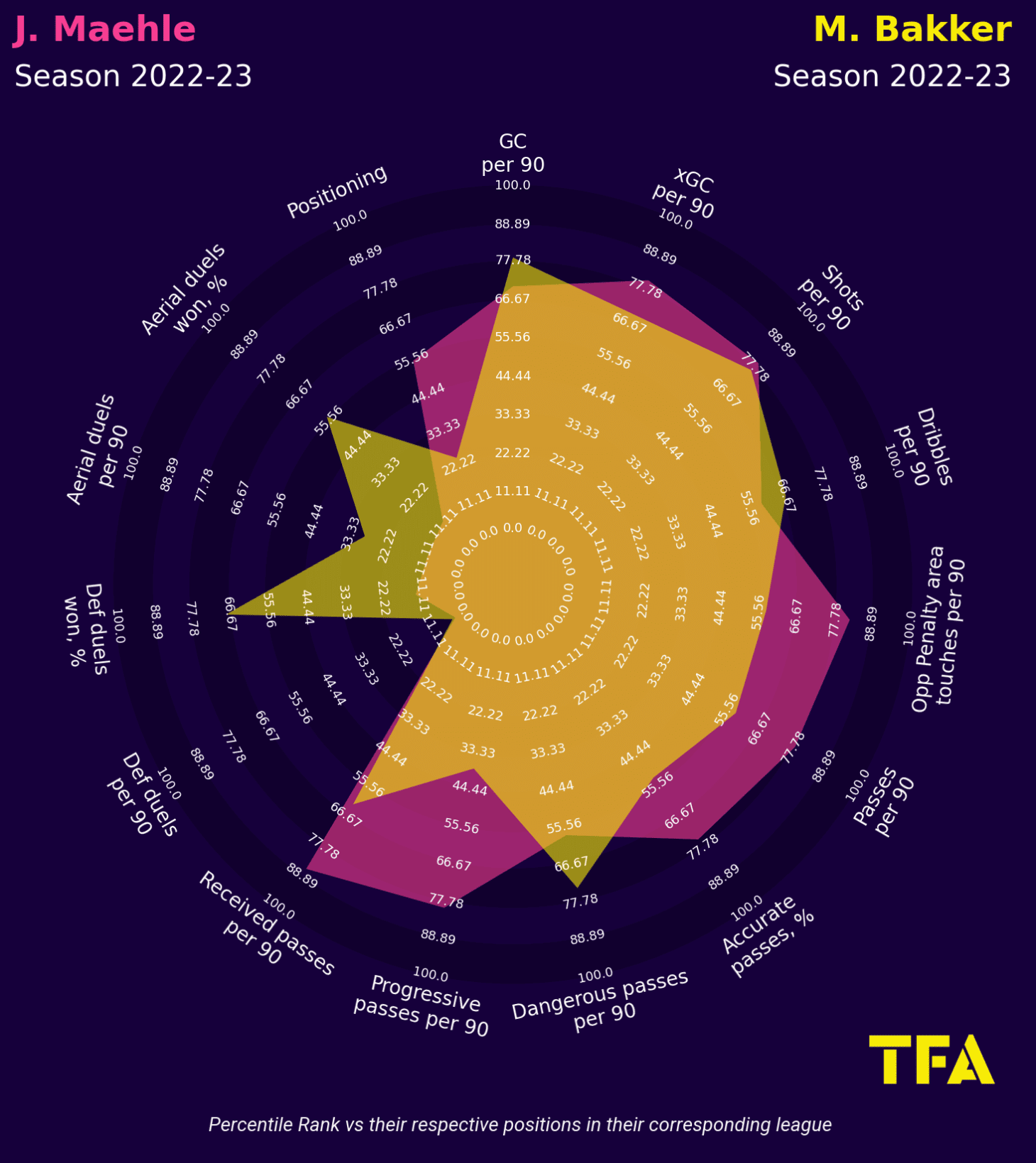
Kolašinac is also not a bad option for the team, despite him playing predominantly in four-man backlines.
However, the Italian might rely on him in the later stages of the games whenever the team needs defensive support, especially if they have the lead and want to keep it.
He can also be used in centre defence and contribute through his passing.
The following radar shows a comparison between the two new additions.
Another option on the left is the 21-year-old academy talent Matteo Ruggeri.
He is suitable for the role and if Gasperini gives him more playing minutes he can develop into a key figure for the team.
He supports ball progression and helps with crossing.
His penetrating carries add explosiveness in the final third and allow the rest of the team more freedom of movement so they can overload the box.
His defensive contribution is equally beneficial which makes him a great addition.
The situation on the right is much more complicated.
Hans Hateboer is injured again, and while he was one of the most valuable players for the team a few years ago, he is slowly losing his starting spot.
Gasperini was forced to use Davide Zappacosta, who cannot match Hateboer’s intensity in possession despite his solid defensive contribution.
The example below demonstrates his importance in attack as he moves into the advanced positions and supports with crossing, allowing his teammates to move towards the box and overload it.
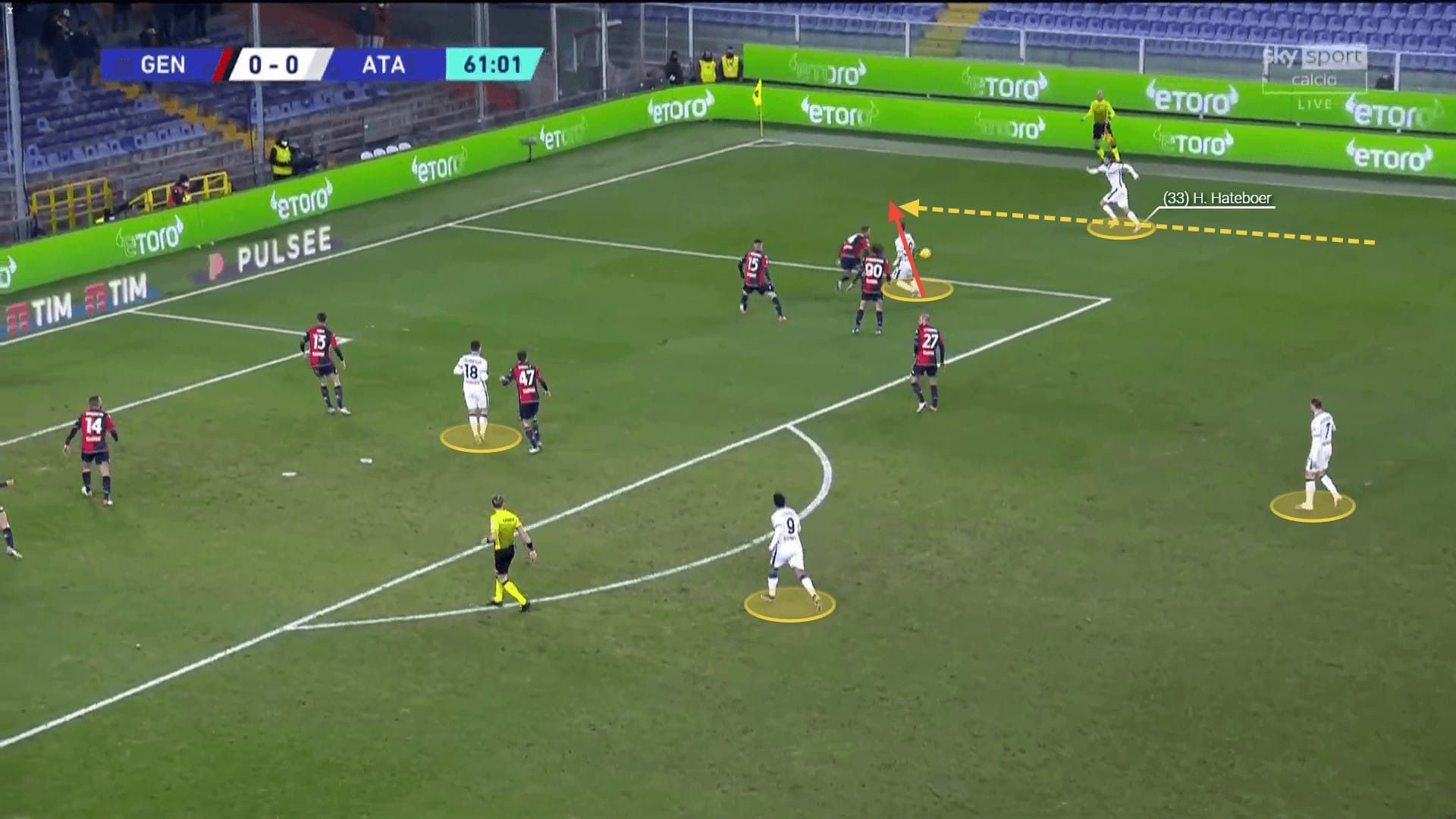
The manager is still expected to rely on those two, though, as he needs more quality options on the bench.
Brandon Soppy wasn’t convincing enough whenever he got a chance to play last season, while Nadir Zortea and Davide Ghislandi have just returned from loan and it is yet unclear if Gasperini would use them regularly.
The wing-back role is essential for Atalanta as much of the attacking movement goes through their channels.
The wing-backs are used as ball progressors and as passing outlets for link-up-play, both crucial for the quick offensive transitions the team wants to execute.
They are also vital for La Dea’s frequent and successful counter-attacking movement.
Gasperini’s approach to that role isn’t expected to change, and he will still actively rely on the wing-backs in attack.
Their importance during defensive transitions is high as well, as they support the first pressing line and often help the team with high regains.
Their presence in midfield gives Atalanta a numerical advantage, and thanks to their pressing strategy, they often regain control in these areas.
Midfield Ventures
Atalanta need more depth in the centre midfield positions.
They signed Michel Adopo from Torino, but it is unlikely that he will earn a starting spot.
However, he is expected to be used as a substitute in the final minutes of the games.
The centre midfielders’ performance is crucial for the team as they orchestrate play and support the team out of possession.
Teun Koopmeiners and De Roon will continue to be used in a double pivot, with Éderson as a backup option.
Koopmeiners is irreplaceable in La Dea’s current set-up as his intelligent movement, attacking runs and passing range support the team’s movement both out wide and centrally and provide both direct and indirect threat.
His 2022/23 pass map perfectly illustrates his contribution all over the pitch.
He often initiates a switch of play thanks to his ability to identify free spaces and move the ball out of danger.
That’s also necessary to take advantage of the wing backs’ advanced movement, as whenever he supplies them with passes, the attackers have the time and space to overload the box and provide more options for finishing the attacks.
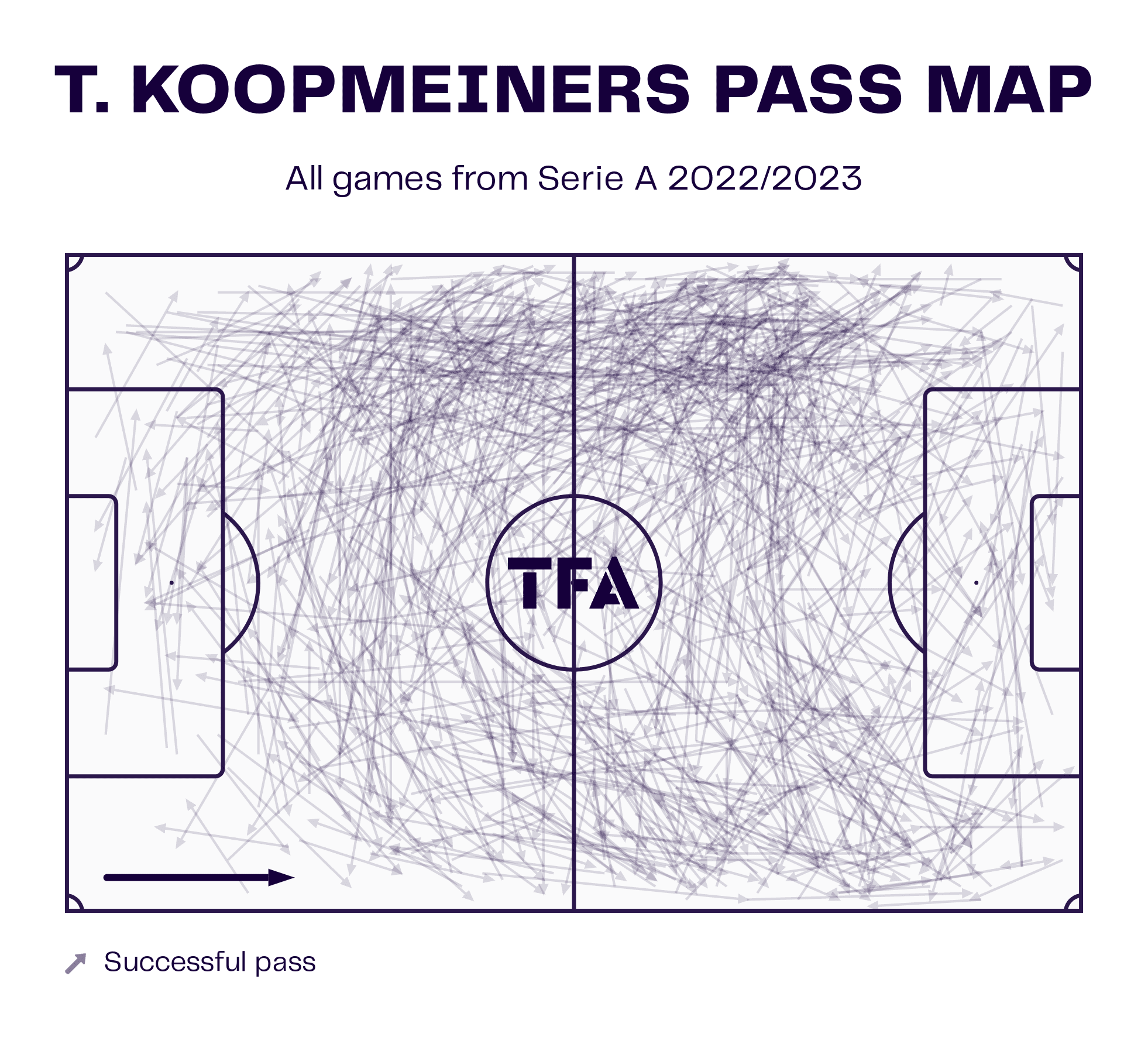
He and De Roon are the ones that support ball retention and ball progression very actively, as most of the balls from the defenders go through them.
The team often move into triangular shapes and circulates the ball from the centre-backs to the wing-backs and then centrally or the other way around as they try to advance it.
Both midfielders split their responsibilities well, as Koopmeiners has more freedom to move between the opposition’s lines and join the attacking actions, while De Roon has more defensive duties.
He breaks opposing attacks through his strong positioning and immediate counterpressing actions, leading to gaining back possession in the advanced areas.
The below radar confirms the difference in their responsibilities and strengths, which compares their numbers in crucial indicators.
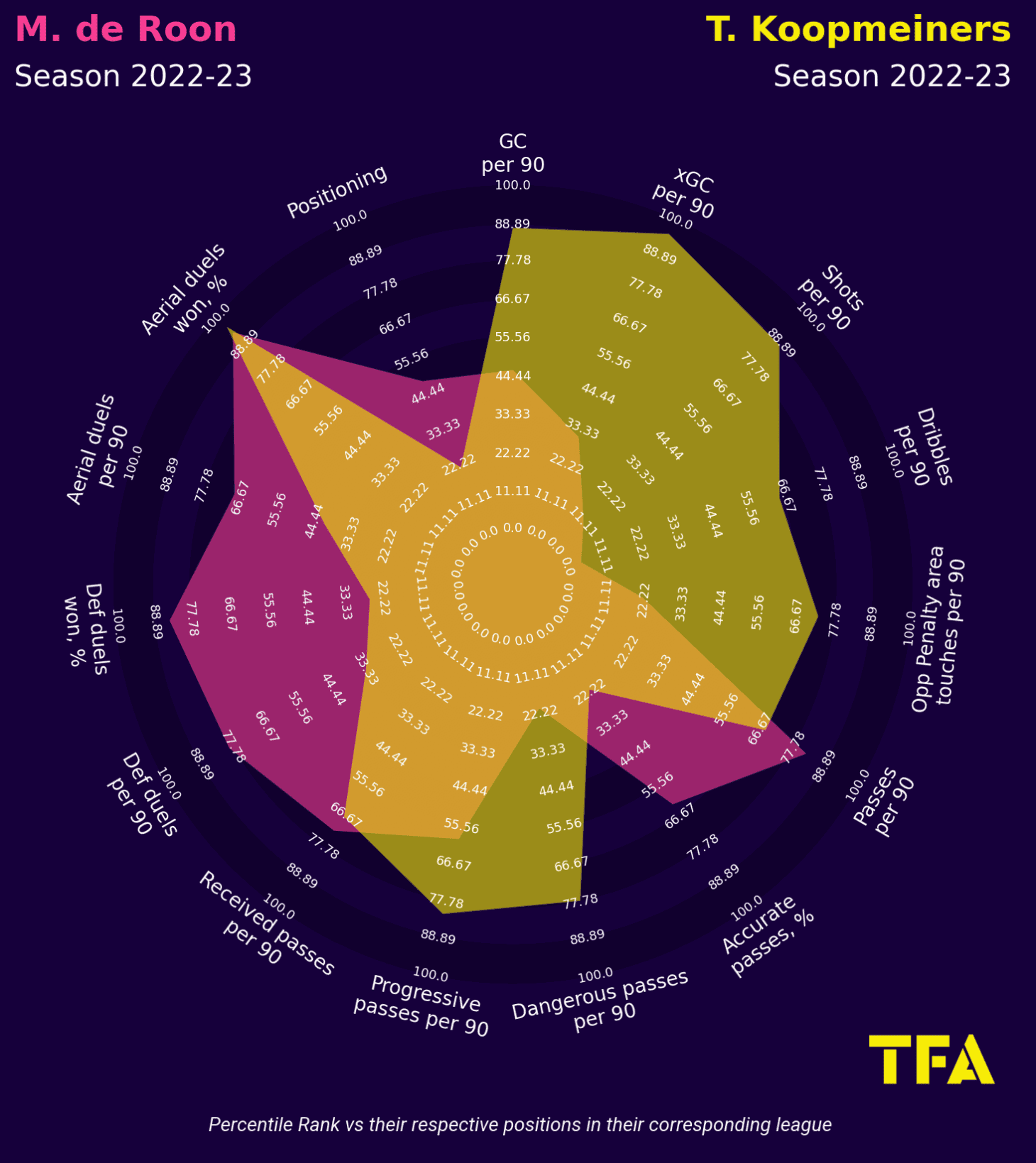
Éderson is also not a bad option in the LCM position, although he is not as efficient in attack as Koopmeiners.
He does join the attacking actions and tries to threaten the goal, but he is not as supportive of the ball progression.
Gasperini tends to use him for rotation purposes and whenever he needs more defensive security, as the Brazilian tends to dive into challenges and contributes with ball interceptions quite frequently.
Final Third
The attacking midfield situation changed noticeably over the last couple of seasons.
Last term, Mario Pašalić was the only player who fit into the AMF role.
With Ruslan Malinovskyi joining Marseille on loan and now on a permanent deal, the team immediately needed to recruit a player in that position.
Aleksey Miranchuk returned from his loan spell at Torino.
However, Atalanta still lacked depth, with Viktor Kovalenko’s future at the club being unclear.
That’s why they insisted on bringing Charles De Ketelaere on loan from Milan.
Despite failing to impress for the Rossoneri, the competition he will bring for the rest of the attacking midfielders shouldn’t be underestimated.
It is unclear if Gasperini will give him a chance in the starting XI as he lacks the creativity and intelligent movement of his new teammates.
He occupies the box more frequently than them and can help overload and disposition defenders, but he is less likely to provide a direct threat to the goal or successfully set his teammates up.
Pašalić is the first-choice attacking midfielder thanks to his intelligent movement around the opposition half and his ability to link up play.
He identifies free spaces and exploits them, frequently threatening the goal with his late runs to the box and strong finish.
The example shows that the Croatian occupies dangerous areas and can successfully set his teammates up with through balls.
Gasperini usually pairs him with Koopmeiners whenever he plays with a lone striker while playing Éderson in midfield.
He might be relying on that setup more frequently with the arrival of Scamacca.
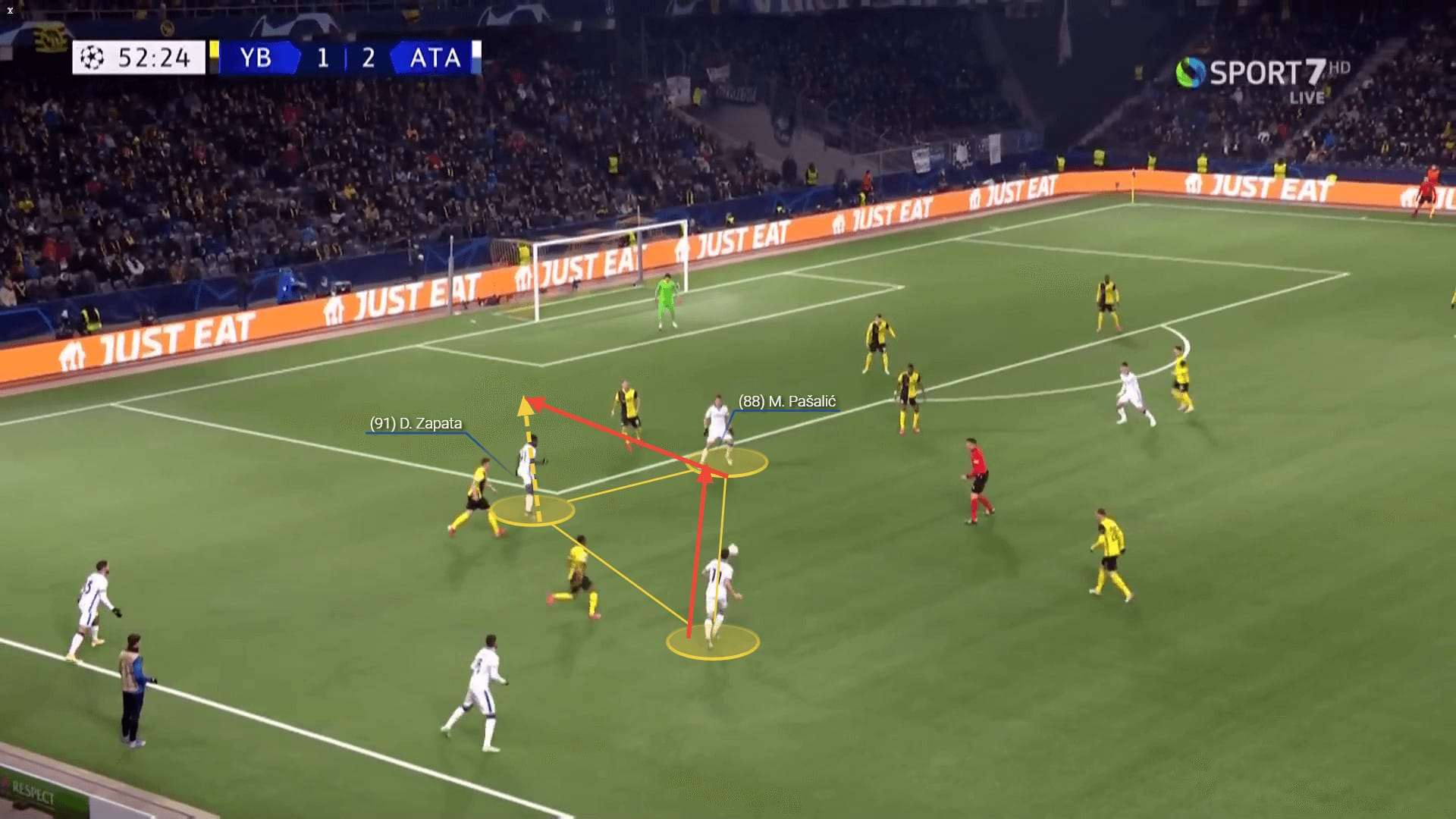
Ademola Lookman is expected to be critical in the new season.
Not only was he their top goalscorer in the 2022/23 campaign, but his versatility provides options for multiple positions in the final third.
He is equally efficient as a centre-forward and left and right winger.
With the departure of Højlund and the arrival of Scamacca and El Bilal Touré, Gasperini is most probably going to use him in a more flexible so he can take advantage of the new additions’ strengths centrally, especially when using the 3-4-3 formation.
That won’t take off of his explosiveness, as he can successfully move out wide and centrally with and without the ball.
The advanced movement of the wing-back will allow him to stay in the box and combine with his attacking teammates.
However, Scamacca isn’t guaranteed a starting spot in the presence of Duván Zapata and Luis Muriel.
Their drop in form, however, might push the manager to give him a chance.
The Italian can threaten the goal both from close distance and outside the box, although he struggles to hold on to the ball and win his duels, which is essential for Atalanta’s intensive style of play.
He does drop deeper, though, which could also benefit ball progression and their counterattacking activity.
The image illustrates his tendency to do lay-offs as well.
He engaged the defenders, but instead of progressing with the ball once he received it, he stepped back and quickly back-heeled it to his teammate to the empty space.
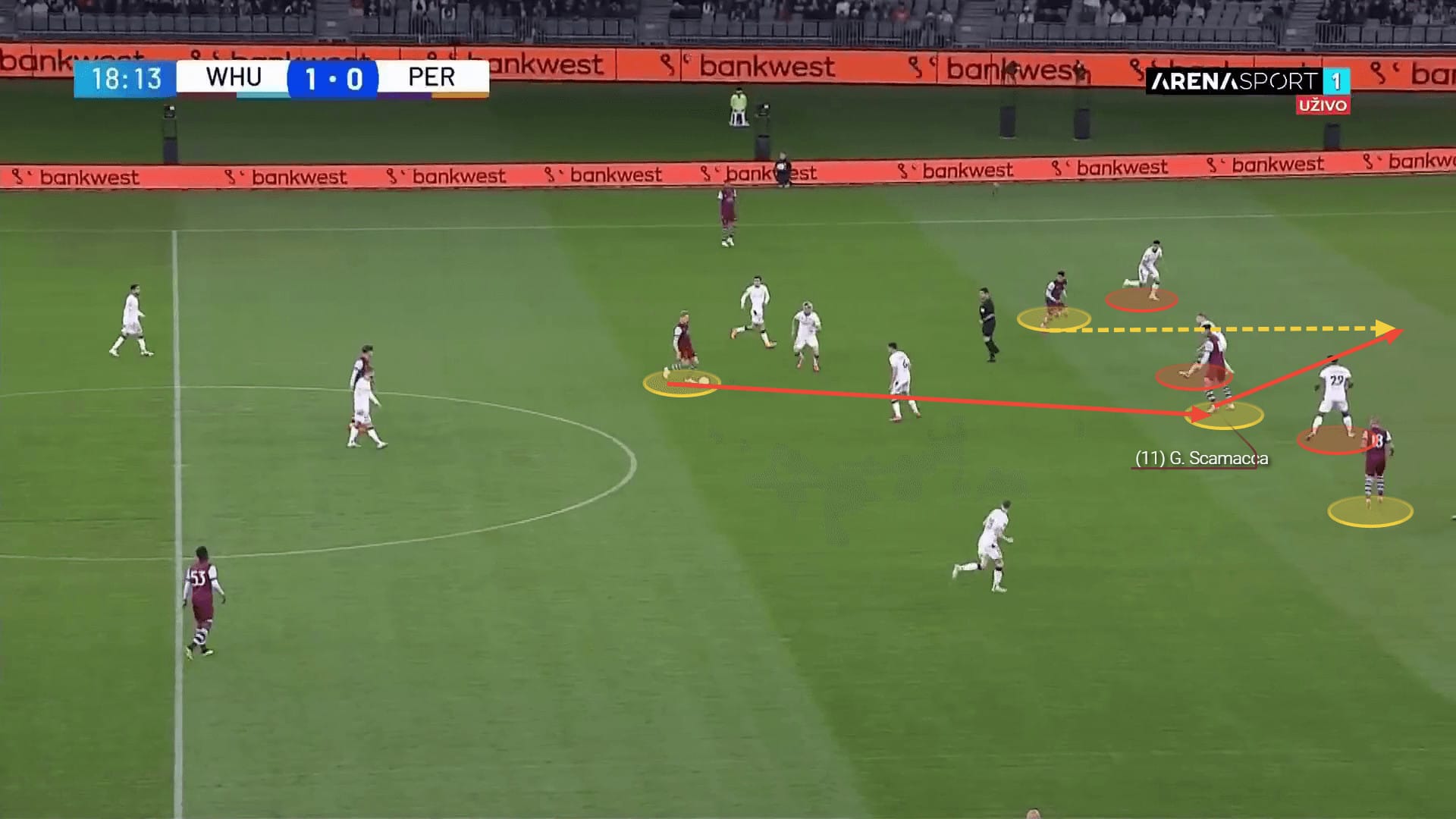
The 21-year-old Touré, injured at the time of writing, provides the needed squad depth.
However, he will need to gain more experience and adjust to the new league and is unlikely to earn a starting spot in Serie A.
Conclusion
As our analysis shows, Atalanta managed to close yet another successful transfer window.
With their intelligent business, they not only managed to find quality replacements and were more than considerate of how much they spent. Bringing in some experienced players and some youngsters that they can potentially develop gives them the confidence to be competitive enough in the new season.
Realistically, it will be difficult for them to maintain the same level in the Europa League.

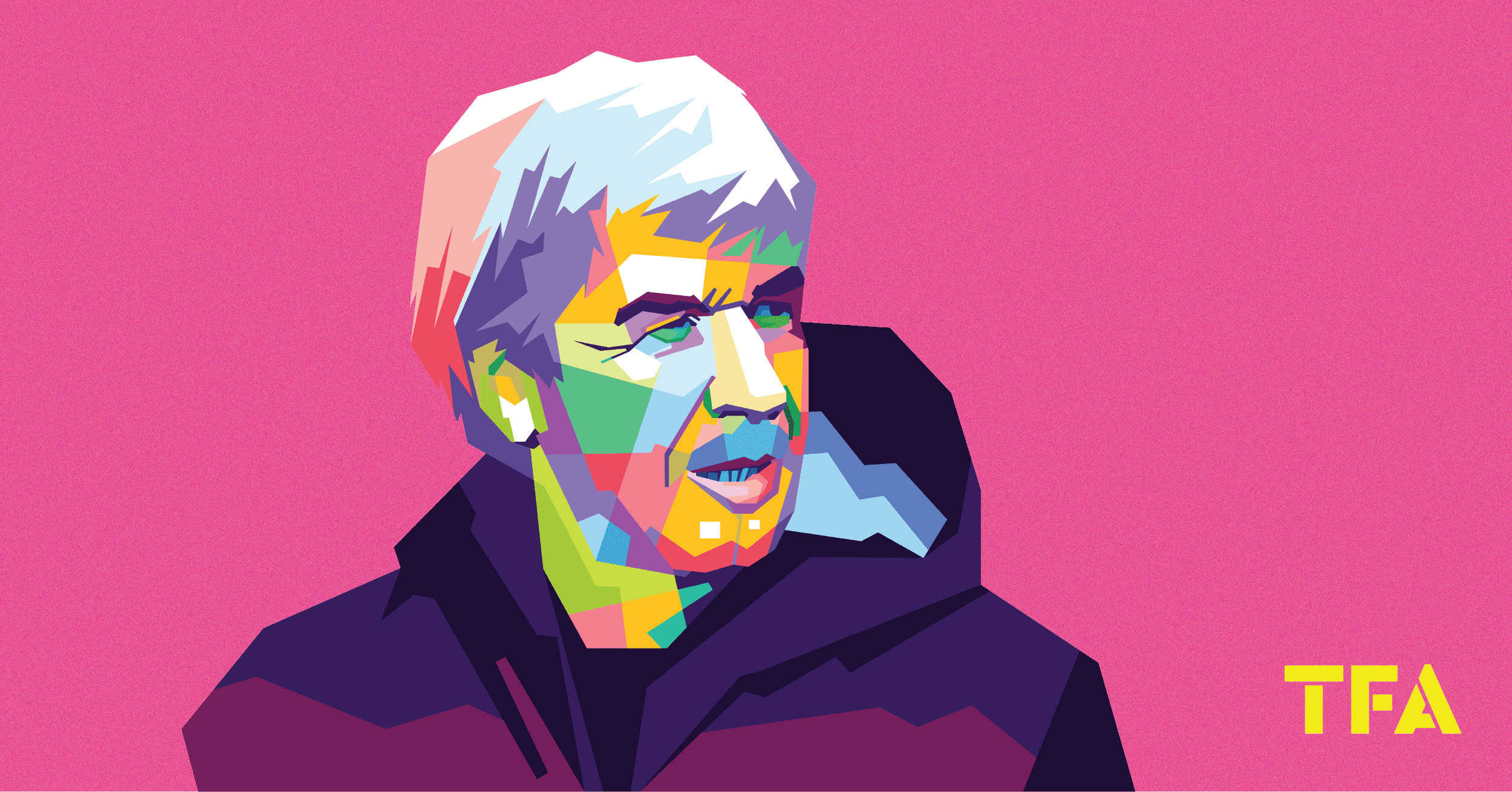




Comments